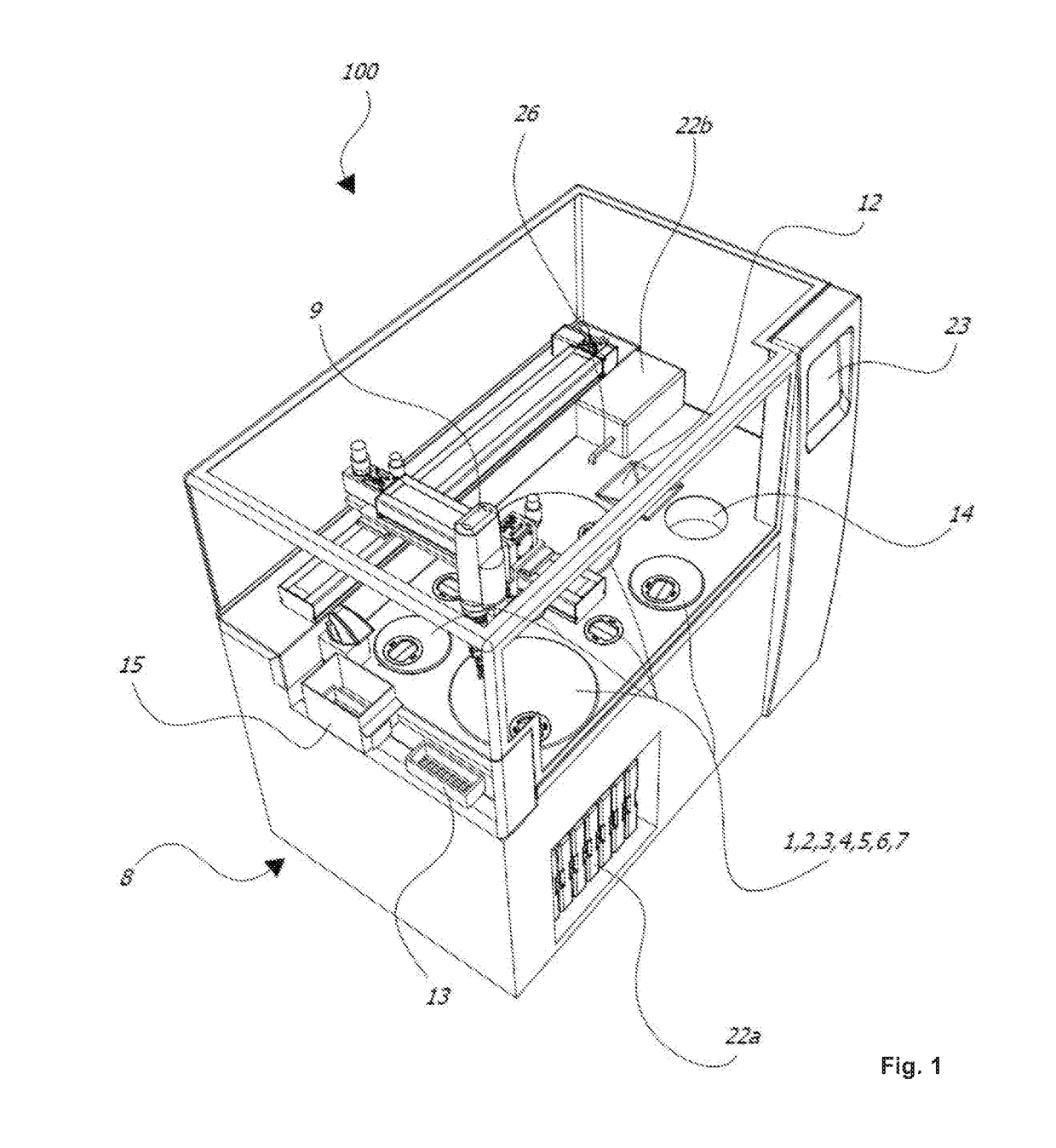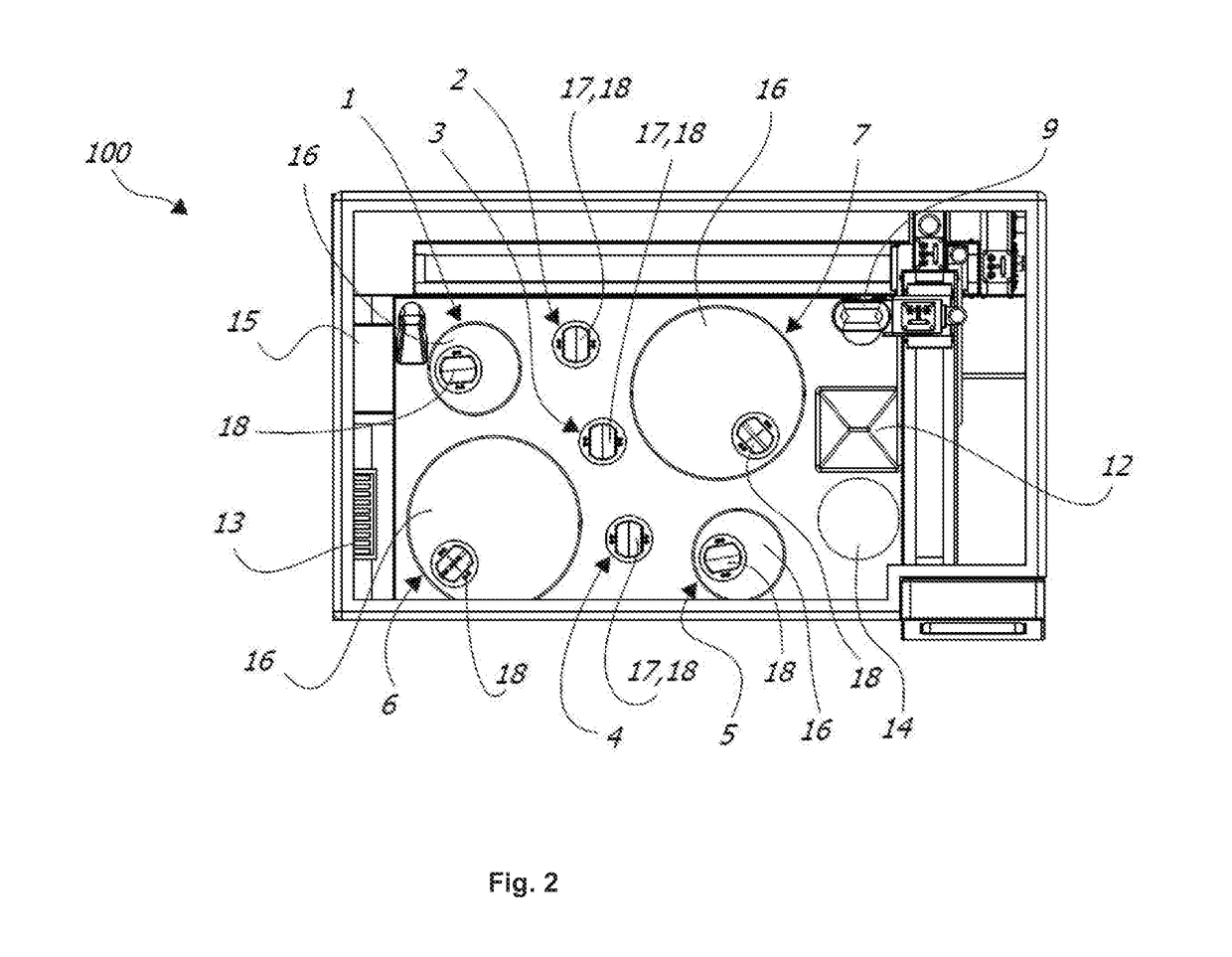Tissue Processor
a tissue processor and tissue technology, applied in the field of tissue processors, can solve the problems of not being practicable, not being able to achieve the real workflow, and forcing for a compromise between speed and quality of process, so as to avoid contamination of operators by containers, improve processing efficiency, and reduce processing costs
- Summary
- Abstract
- Description
- Claims
- Application Information
AI Technical Summary
Benefits of technology
Problems solved by technology
Method used
Image
Examples
Embodiment Construction
[0038]In the following, the invention is described exemplarily with reference to the enclosed figures, in which
[0039]FIG. 1 is a perspective view of an exemplary embodiment of the tissue processor according to the invention;
[0040]FIG. 2 is a plane view of the tissue processor shown in FIG. 1;
[0041]FIG. 3 is a top view of the tissue processor shown in FIG. 1;
[0042]FIG. 4 is a functional diagram of a part of the tissue processor shown in FIG. 1;
[0043]FIG. 5 is an exploded view of a preferred tissue carrier;
[0044]FIG. 6 is a side view of the tissue carrier shown in FIG. 5;
[0045]FIG. 7 is a table showing an exemplary protocol for processing different tissue specimens by the tissue processor;
[0046]FIG. 8 is a table showing an exemplary timeline for concurrently processing the different tissue specimens of FIG. 7.
[0047]FIGS. 1 to 3 show an exemplarily tissue processor 100 for automatically processing (preferably at least processing including embedding) histological tissue specimens. The t...
PUM
 Login to View More
Login to View More Abstract
Description
Claims
Application Information
 Login to View More
Login to View More - R&D
- Intellectual Property
- Life Sciences
- Materials
- Tech Scout
- Unparalleled Data Quality
- Higher Quality Content
- 60% Fewer Hallucinations
Browse by: Latest US Patents, China's latest patents, Technical Efficacy Thesaurus, Application Domain, Technology Topic, Popular Technical Reports.
© 2025 PatSnap. All rights reserved.Legal|Privacy policy|Modern Slavery Act Transparency Statement|Sitemap|About US| Contact US: help@patsnap.com



